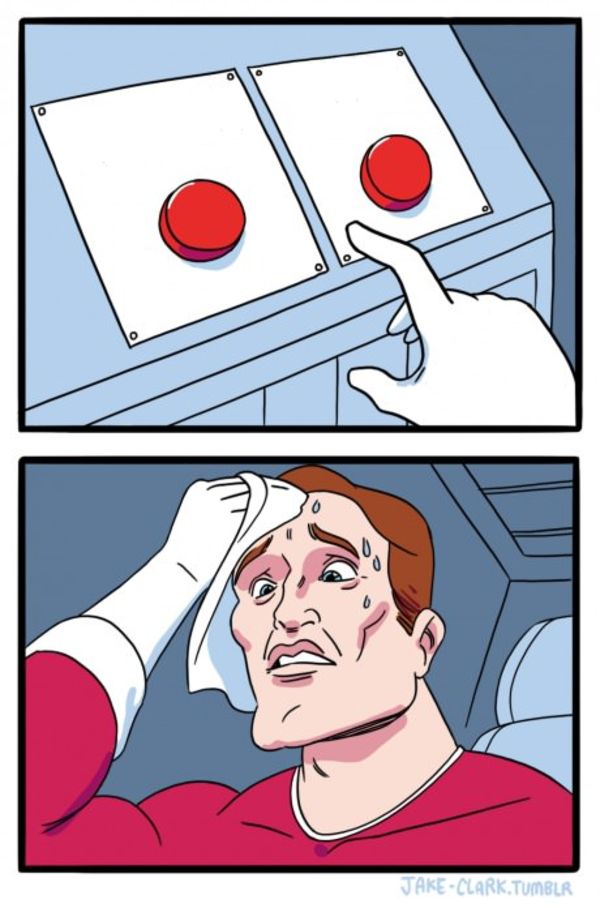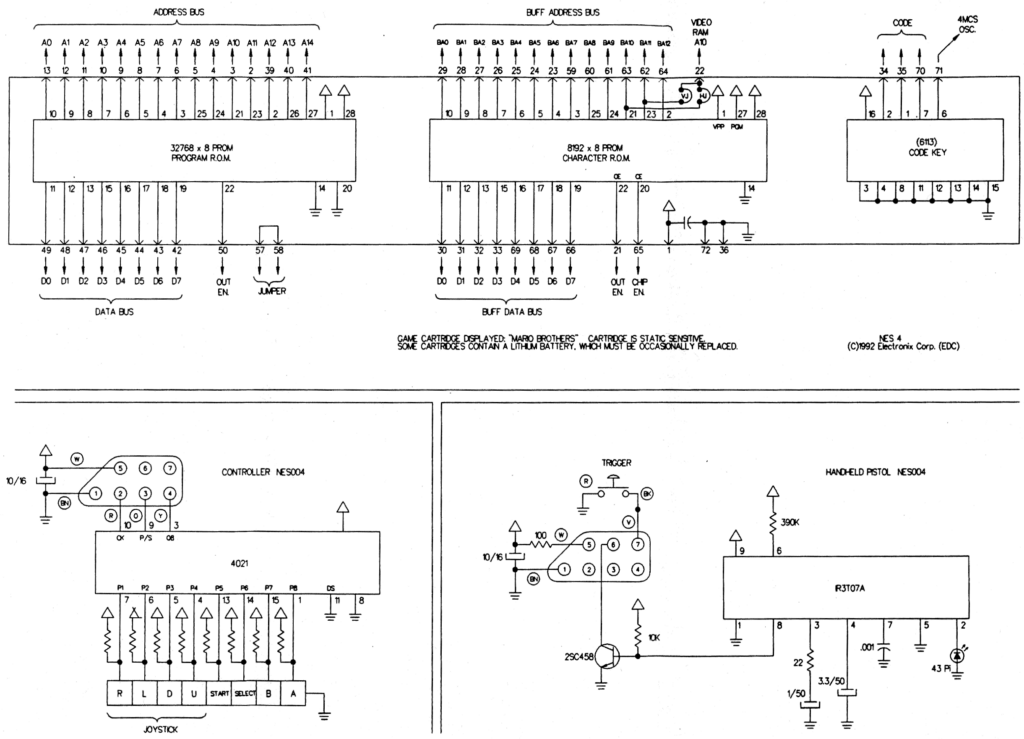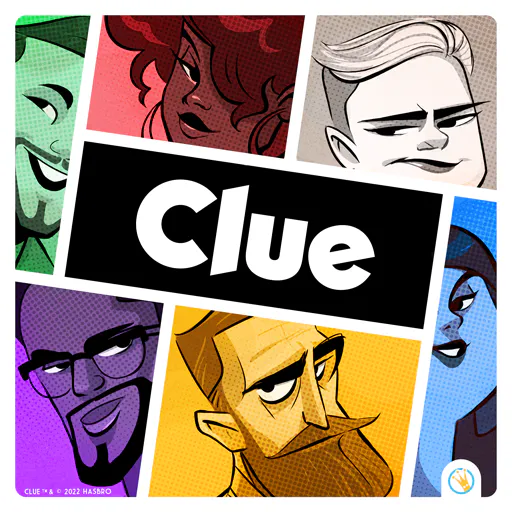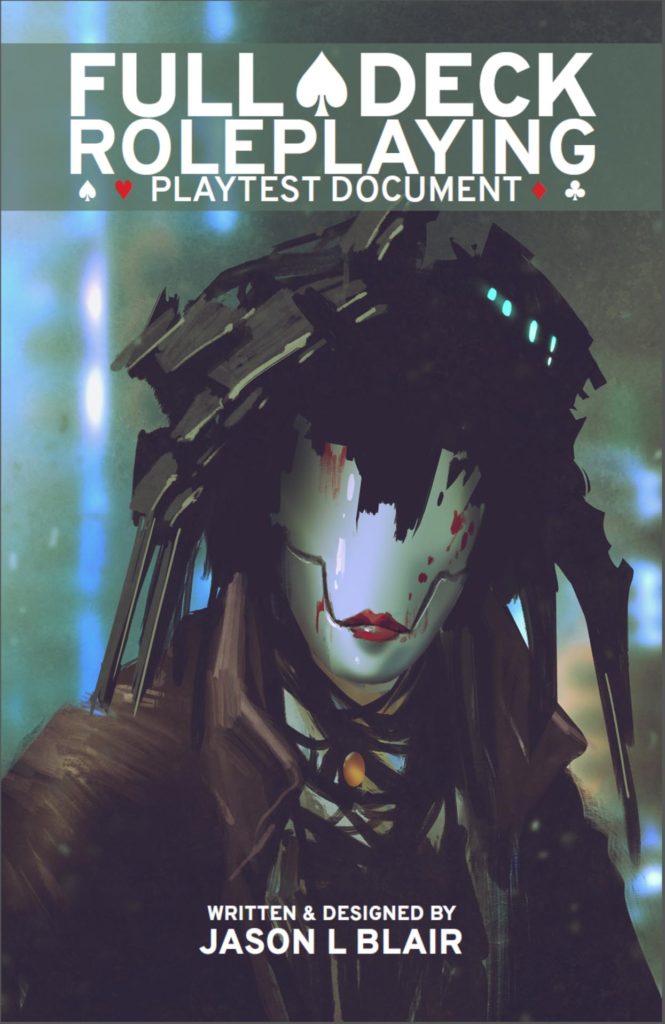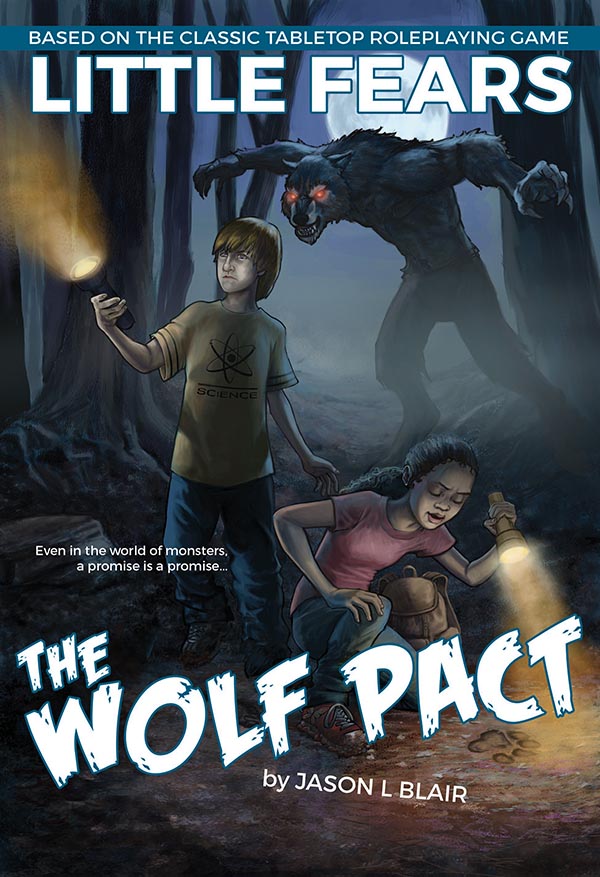Back in the Summer of 2021, I taught two courses on Critical Game Analysis for Bradley University. My friend David got me connected there. I took over the classes he originally intended on teaching but couldn’t due to the workload he was already carrying. I had never taught before—not formally—but I was excited for the opportunity.
The course was split into lecture and lab with the majority of the grade weight coming from essay work. As someone with a lot of experience in writing and game development, I was a good fit on paper but I had never formalized my process for viewing and analyzing games. This opportunity forced me to do just that.
Most game developers get to a point where they can’t help but analyze systems of interaction. Whether it’s playing a video game or navigating the menus of a streaming service or waiting in line for your favorite ride at Disney World, we are surrounded by interactivity. As a game developer, I trade in interactivity. My medium of choice is defined by it. Yet, most folks don’t think twice about it. Or do so passively. They just want to play the game. They just want to find something to watch. They just want to get on the ride.
But as someone making an interactive experience, I have to look. I have to analyze. I need to be able to design, sculpt, and polish the experience that’s right for whatever I’m making. But how would I express to others the weird machinery in my head that turned input into output, internalized experiences to externalized design?
I’m emotional and creative, yes, but also I’m an analytical, logical person. I think I balance the two fairly well and code switch ably though, certainly, there are many better at both. Still, I straddle the two okay. I think that’s why I’m (not to be immodest) good at my job. So I sat down, clicked into analytical mode, and jotted down every thought that came into my head. From there, I categorized and prioritized and, from there, came up with the skeleton of how I look at and break down not just games but all sorts of interactive media. I then flipped the toggle to creative and addressed each point with a contextual bent to make the points easier to grok and retain.
I figured, while I’ve been updating this blog, I may as well share the high levels of those thoughts for any who might be interested. While this process can be applied to any interactive experience, I am going to wrap all of this within the context of gaming. So, let’s break down some video games.
Beat Breakdown
No matter your game. No matter the genre. No matter the mechanics. No matter the story. If you are creating a piece of interactive media, you must be aware of four essential elements and how the size and shape of each informs the user experience. The decisions you make along these four points define the experience you are making. They inform how people will speak of your game. How friendly or unforgiving your game is. They are decisions you will make over and over and over throughout the course of a game’s development. They are an integral aspect of the design. They are the key beats of interactivity. In order, they are Prompt, Input, Feedback, and Reaction.
Size and Shape
Before we dig into the four beats, I want to define two specific terms: size and shape.
Size is how much time the beat takes up. It’s the window for response, it’s how long the player has to press the button, it’s how big the feedback is, and it’s how celebratory or condemning the reaction is.
Shape is how the beat is presented in-game. A beat can be auditory, visual, haptic, or any combination.
The direction and design of these elements informs the experience more than you can possibly imagine. The size and shape create the beat’s volume.
Beat 1: Prompt
A prompt is how the game tells the player something has changed. The prompt’s job is to tell the player, “hey, this specific thing happened. You need to be aware of it.” The louder a prompt’s volume, the more it’s trying to get the player’s attention. The higher the volume, the higher the priority.
Games have a lot of prompts. From notifications to events happening in the game world to a HUD that is responding to changes based on player input and reward. From the sudden appearance of a giant health bar at the top of the screen to some enemy shouting “There they are! Get ‘em!” If anything is changing in the game—especially if the player’s proximity to success is affected by their response—there must be a prompt.
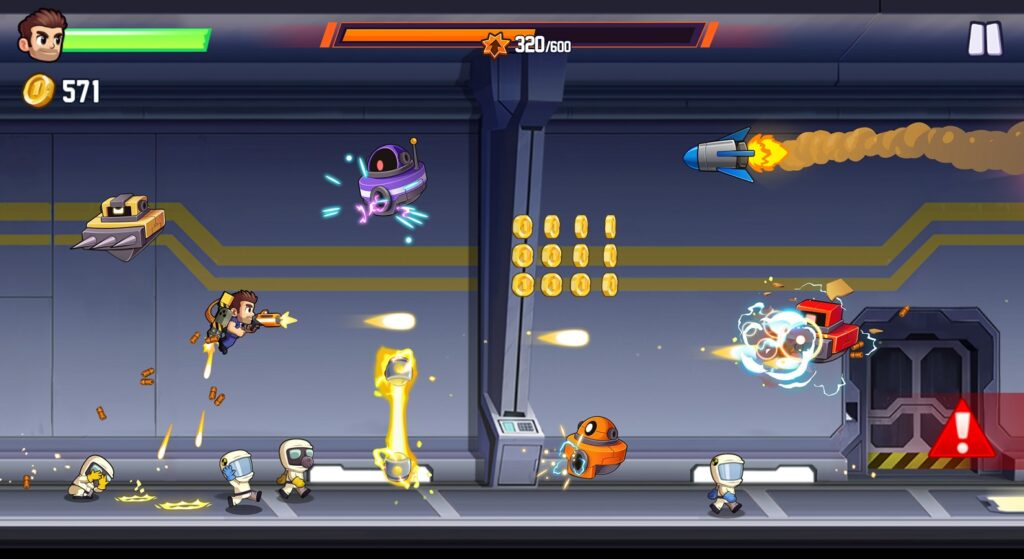
The size and shape of the prompt, both how it’s presented and the window of time the player has to respond, is crucial to the experience. Seeing a large pulsing icon and hearing a woop-woop-WOOP sound effect for five seconds before a bomb goes off feels significantly different that seeing a faint flash of red light and hearing a tiny bee-bee-beep for half a second before the explosion. One speaks to a cartoony or arcadey experience. The other feels more like a military sim. One gives me more time to process and react to the possibility of danger. The other demands I act fast or suffer the consequences.
The prompt isn’t always alerting the player to something potentially negative. The game might be telling you where treasure is or that you are being healed by a teammate or that you leveled up and unlocked a new skill!
Another consideration when determining the size and shape of a prompt is accessibility. If audio is key to the prompt, how do you account for those who either cannot hear or play with no or low volume? Visualizers can help–telling players where footsteps or gunfire are with icons and arrows–but they create a very different prompt that must be balanced separately. Color processing issues must also be accounted for. Something as simple as a red barrel is bad and a green barrel is good can be difficult for certain types of “color blindness.” You needn’t account for all possible accessibility issues. Just be aware that whatever you don’t account for creates a barrier to entry for anyone who has that limitation.
Whatever the prompt, the game is asking the player to make a decision. That decision is made via input.
The goal of a prompt can be immediate—avoid the bullet!—or long-term—reach the bank vault!—and each will demand different messaging.
Counter-intuitively, the lack of a direct prompt is its own kind of prompt. Imagine you’re a detective standing in the middle of an abandoned house with no light. Nothing is moving. Nothing is making noise. The game is playing off my experience as a gamer with implicit prompting. I know I should be seeing something or hearing something or feeling something so I equip my flashlight and turn it on. I move my character around until I find different types of prompts that inspires different types of input.
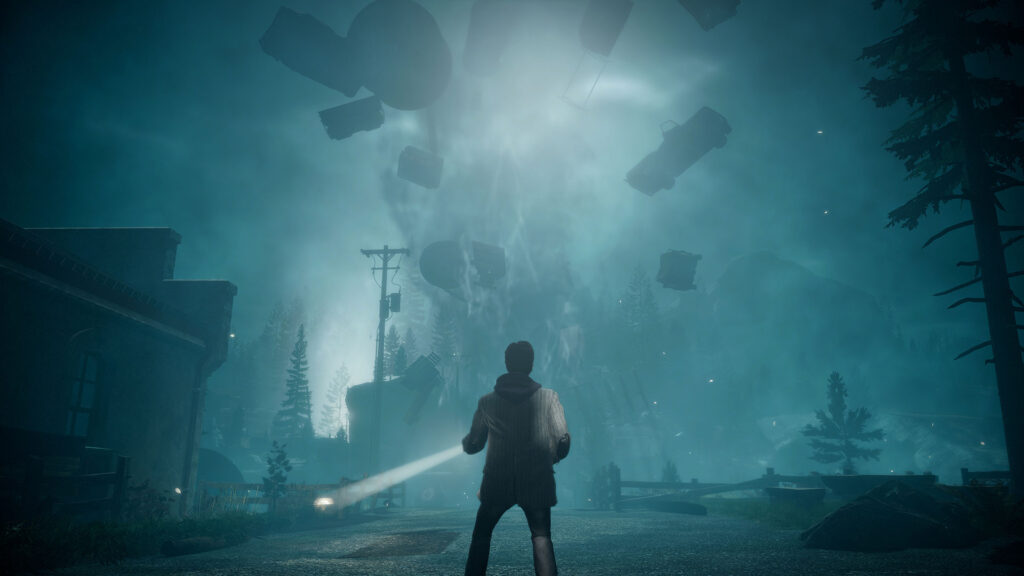
Beat 2: Input
Input is what the player must do in response to the prompt in order to maintain or advance their proximity to success. The player might need to dodge or cross some distance quickly. They might need to tap a button or hold a key or swivel a stick or scroll a mouse wheel or waggle a motion control. The player needs to do something. And that something is the input.
Input size is how long they have to react. The shape is what they must physically do as the reaction. The ratio of those two things–small to small, large to large, large to small–create very different feeling experiences. If I have a long time for a single button press, that feels more relaxed, more casual. If I have a short time to input a long string of commands, that feels tense and exciting. If the ratios are more even, that feels steady, reliable. Games set one of those ratios as their base-level and vary it to create more casual sequences and more exciting moments. That ebb and flow, those peaks and valleys, create a game’s pace.
A simple input string—like tapping one button one time—is best for basic actions. Tap the B button to do a single jump. Push up to take a step forward. Press the trigger to shoot. The core verbs of a game—the most basic character actions—have the simplest inputs. Conversely, holding down the right trigger while rotating the left analog stick and tapping X speaks to a complex action. It’s a lot of input to demand out of a player and it creates an even greater physical barrier to success. (Keep in mind accessibility: The greater the physical barrier, the more narrow the audience that can complete it.) This could be picking a lock or defusing a bomb or hotwiring a car or performing surgery. This type of action takes more time, requires more physical movement by the player, and demands more of the player’s attention. In most games, these are special actions for special moments.
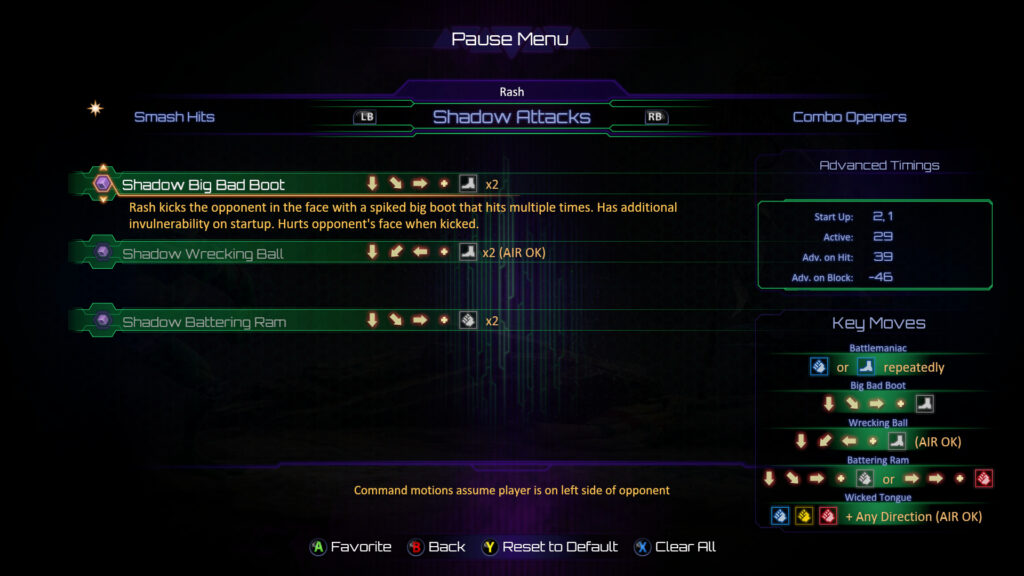
Input options can vary, meaning the player has more than one positive action they can take in response to the prompt. If a reticle appears in the middle of the screen that tells them an enemy is targeting them, the player might be able to roll-dodge, get behind cover, pop a shield, or cast a spell that makes them invulnerable. All are equivalent options—all proper to the prompt—that take the player experience down a different branch (and provide a different player story when they share it with their friends).
Failing to respond to the prompt properly—by not taking any action or taking an action that’s inappropriate to the prompt—also happens and is, in its way, a type of input. Whether your input did the thing you want it to do is expressed via feedback.
Beat 3: Feedback
In the simplest terms, feedback confirms the input. The player fires their gun? A blast of fire shoots from the barrel of the weapon, a tracer draws a yellow-white line toward the target, and the number of ready rounds ticks down by one. The player ingests a speed booster? The avatar yells “I can hear color!” as a whirring noise builds up and motion lines fill the edge of the screen. The player misses a note in the big solo? They hear a sharp skrrzt and the virtual fretboard flashes red. Hey, hitting the wrong input requires feedback too.
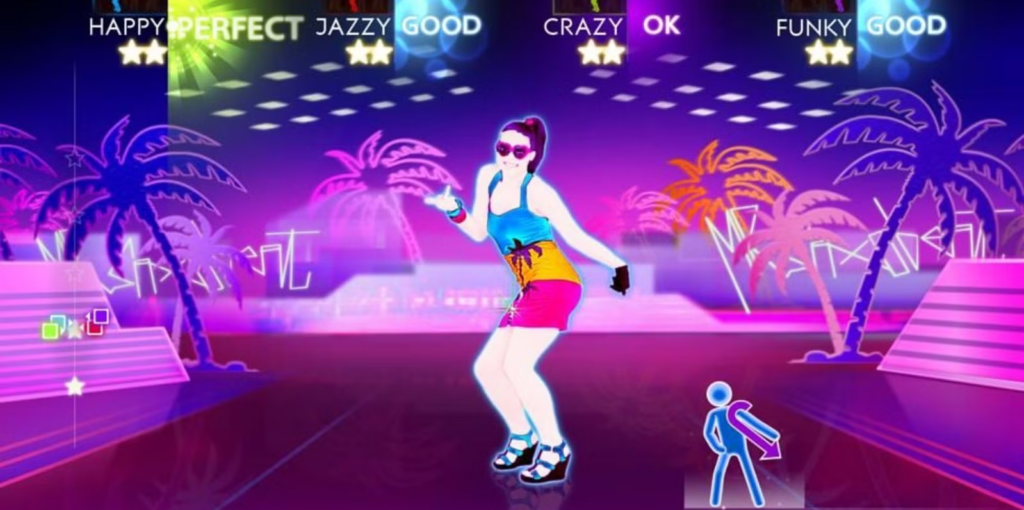
Feedback can be for a single action or a gestalt action built by multiple successful inputs. Combo meters are a classic example of a gestalt action. A combo meter ticking upward doesn’t just help to reinforce a single action but tells the players they have been successful numerous times in a row. This taps into player drive to not break their streak. So, in a way, it’s acting as a prompt or at least incentive (which is kind of an internal prompt).
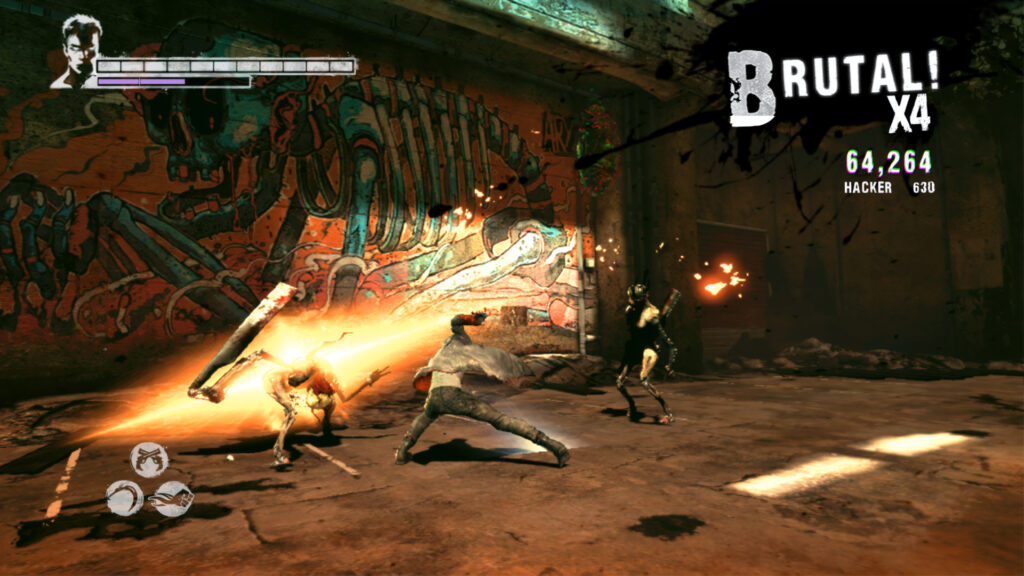
In games, players are taking two actions: a physical one and a virtual one. The physical one is pushing the button or pressing the key or clicking the mouse or waggling their arms in front of the motion sensor. The virtual action happens in-game. The avatar moves, the gun fires, the potion is consumed, the dancer takes position. Feedback tells the player their physical action successfully actuated a virtual one. Whether that action helped them, hurt them, or did a bit of both is conveyed via reaction.
Beat 4: Reaction
Reaction tells the player whether they did something right or wrong. Or, more accurately, whether they did something that moved them closer to or farther away from success. And also how they are moving in that direction: effectively, inefficiently, with fire, with poison, whatever. Green numbers flying off an armored target is a reaction. So is a bunch of red Xes pulsing at the point of impact. The first tells the player they’re doing damage which is really reducing the time the target is in its current state (possibly moving the target into an inert or “dead” state, possibly moving them into a more active, aggressive state). The second tells them their current input is ineffective toward that end.
(Feedback and reaction often blur together. They’re often grouped together. And a single icon, visual effect, audio stinger, or rumble can serve both functions. Combining the two should be a deliberate choice and you should be aware that two separate bits of information are being sent—even if they’re being sent in the same message.)
At its core, reaction is a thumbs up or a thumbs down. The shape of the reaction has a lot of vectors to exploit when it comes to visual language, audio angles, force feedback. You can be economical or elaborate, whatever sells the feedback in the right way. In the above example, yellow numbers popping off an enemy might say “yes, you’re doing damage but you’re not exploiting a weakness. A different attack type would be more effective.” White numbers might tell the player “this damage is from a previous action whose effect is persisting and still doing Damage Over Time.” A simple color change can say a whole lot to the player. When attempting to pull off a stunt in a snowboarding game, you may get a few claps from an unseen audience and see the words “NICE!” appear on the middle right. This tells you that you completed the stunt and got points but not as many points as you could have gotten if you did the various inputs more quickly or accurately. If you had, the crowd would’ve gone wild and you’d have seen the word “TUBULAR!” dance across the screen.
A reaction can be an enemy player de-rezzing. It can be the reveal of a critical clue in an adventure game. It can be a puzzle master telling us we did a good job. It can be a row of tetrominoes disappearing and the entire remaining wall shifting downward. It can be the audience cheering. A reaction can be a Level Cleared screen or a death animation or the final cutscene and the elation that follows. A reaction can be our health bar dropping to 10% and the feeling of our heartbeat quickening. It can be our gunfire going into overdrive and shooting forth a hellstorm of metal bits. It can a unicorn doing the coffee grinder while Tag Team’s “Whoomp! (There It Is)” plays at full volume.
More elaborate reactions add messaging that speaks to the efficacy of the action. They add a “therefore” to the statement that often acts as further prompts. The player destroys the Gigante Turret but three smaller Poco Droids spawn from the wreckage. The player was successful in taking out the big threat but now the player has to contend with three smaller ones! The player lands a critical jab causing a rival boxer to double over in pain. The game is telling the player they pulled off their attack but also created an opening for a Mega Jawbuster if they press the right buttons at the right time.

On the flip side, failed inputs can create prompts for new, possibly higher priority actions you must take. You missed your shot and hit a gas can and now the wall is on fire! You flubbed a safecracking check and alerted the guards who will one-shot you if you don’t find a place to hide. You hit one mailbox too many, now your escape vehicle is on fire, and you have to find a new ride before your current one blows you to high heaven.
Big positive reactions feel like celebrations. A commentator shouting “Nice job!” The blaring of trumpets! A giant number flying off an enemy after a minute and a half of seeing only single digits pop off! They feel like the game giving you a high-five. Small reactions speak more softly. They’re positive but not excited. A quiet nod. Flat. Direct. Stern. No celebration. They say “You did it” but they’re followed by an implicit “Now, do it again.”
Big negative reactions feel like challenges. They push us to try again, do something different, be faster and smarter and to hit harder. Smaller ones convey that the failure wasn’t that big of a deal. We’ve hit a minor setback and can easily recover.
The reaction should be sized to the magnitude of the in-game effect. Their shape should build and buoy the emotion you want to elicit in the player. Positive reactions done well keep us moving forward. If they’re done poorly, we feel like we wasted our time or didn’t do something right even if we did the best thing possible. Negative reactions done poorly make us feel like we can’t win so we put the controller down or load up something else.
Positive reactions are ultimately the carrots we gamers chase—just as a negative reaction is the very thing we fear and what we curse when we miss that critical jump or Hail Mary pass. Reactions are the condemnation for our failure, the gentle arm on our shoulder telling us to try again, the obstacle egging us on. Reactions are getting the top score, clearing the challenge, toppling the boss, or simply reloading the gun in time to rush forward again. Reactions are the mocking of our defeat and the celebration of our victory.
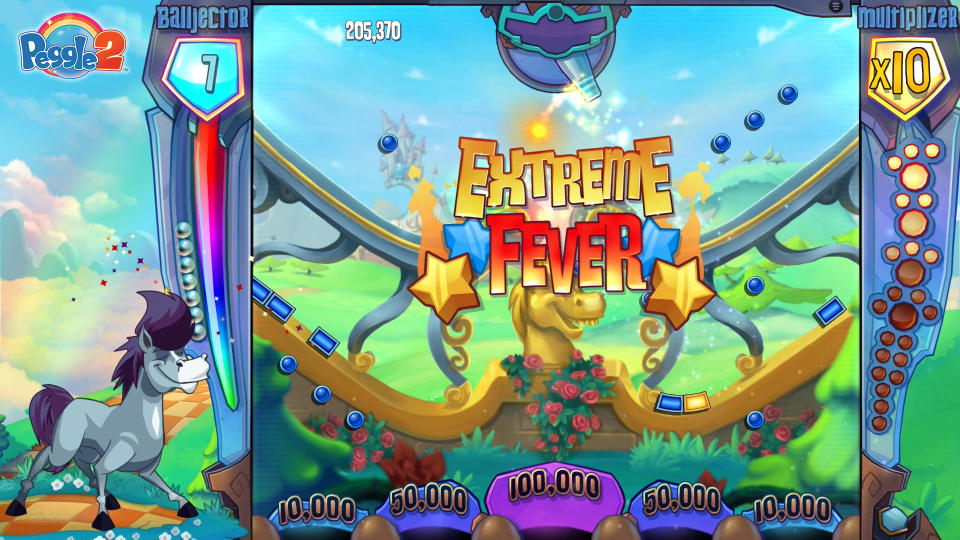
Beat Balance
The balance of all this—and the ratio of prompt to input and of simple action to complex action and of abundance of reaction to level of input—along with how this is all visualized and contextualized crafts the player experience. Games are often defined by the relative size and subtlety of their prompts, the demands of their inputs, and severity of their reactions. This is what we are talking about when we talk about a game’s difficulty and balance. They are the lessons we must learn, the problems we must solve, and our avenues to mastery.
“Bullet hell” games have an abundance of prompts. Every single bullet, rocket, fireball, and explosion is a prompt saying “Move! Avoid! Get away!” And the player has to! And they have to do it quickly, repeatedly, and usually within a narrow safe area in order to survive. A single bullet might take them out of the game and force them to start from zero.
Less obvious messaging mixed with narrow input windows, and punishing reactions demand higher attention from the player and quicker response or else they will fail. Think of the tension that Dead Space builds by using diegetic UI. The use of subtle audio to direct players. The sudden appearance of prompts with narrow response windows as some creature lunges out of the shadow directly at Isaac’s face.
Action management games ask the player to balance multiple prompts that aren’t demanding on their own—each requiring fairly simple inputs—but the sheer number of prompts and how you prioritize and balance the time allotted creates the difficulty. If you’ve played Overcooked!, you know just how frustrating a simple plate of pasta can be while four other orders are stacked up, two burners are on fire, and your coop partner is apparently AFK and OMG ARE WE OUT OF CLEAN PLATES ARE YOU SERIOUS?!
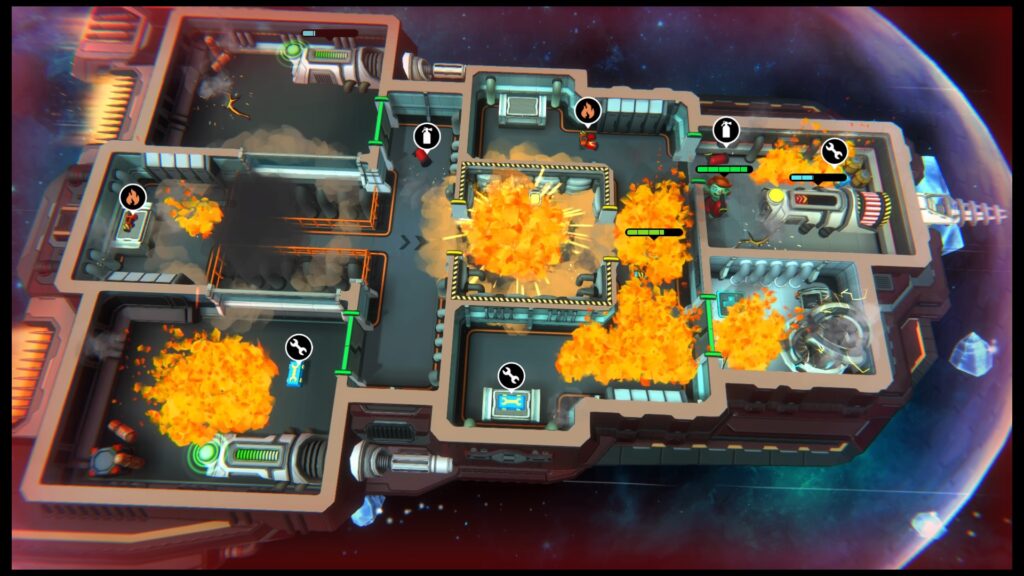
Fewer prompts that require more demanding input speak to a slow game that requires higher mastery. Imagine a game that teaches calligraphy. Each challenge is a different series of glyphs. You have all the time in the world but your accuracy must be impeccable. Puzzle games are often this. I have spent numerous hours staring at the screen of my DS while I attempt to solve a puzzle in order to save some quaint European village from calamity.
Fewer prompts with less demanding input and bigger reaction speak to casual experiences. Hidden Object Games and those intended for a younger audience often fall under these setting. (I love me some HOG games, by the way.)
Final Thought
These beats don’t determine the gameplay. These beats apply to puzzles games, rhythm games, platformers, and shooters. They apply to roguelites, Metroidvanias, 4X titles, and tower defense games. These beats are the foundation of interactivity, no matter the gameplay genre. No matter if it’s a game or not. Open up your favorite streaming app and you’ll see the same principles applied. Same with your banking app. Or grocery app. Or that big screen in the middle of your car’s dashboard. The beats may not be presented in as elaborate a fashion as video games but they’re there. They are the key beats of interactivity. For anyone working in the field, recognizing them and mastering them is how you take control of defining the player experience. Tune the knobs correctly, create the right prompt, and you’ll get the reaction you’re aiming for.
(Images found from around the web with many taken from GameUIDatabase.com, an excellent source for messaging, UI, and UX analyses. No copyright infringement is intended.)

